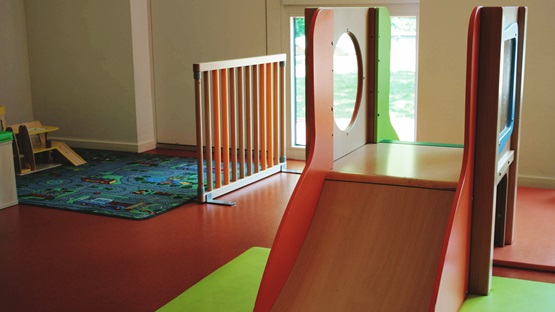Article updated to reflect additional survey responses
Despite signs of national economic recovery, the COVID-19 pandemic and its economic impacts continued to be the biggest story for Ninth District businesses in assessing their past year. “It was very difficult to survive,” said a North Dakota market researcher. Though the experiences of services firms across the region varied, most would likely agree with that sentiment.
The past year was a mixed bag for professional services firms in the Ninth District, according to a survey by the Federal Reserve Bank of Minneapolis and the Minnesota Department of Employment and Economic Development. But these businesses anticipate expansion in their activity and in the broader economy over the coming year.
These results reflect responses from about 300 firms in accounting, consulting, design, engineering, marketing, and other professional services across the Ninth District. The survey, conducted in May and June, asked respondents about their experience over the previous four quarters, as opposed to the calendar year, and their outlook for the coming 12 months.
Although many firms individually noted some improvement from the early stages of the pandemic in the latter part of 2020 and into 2021, most business indicators were down for the year on average. Chart 1 presents these survey results as a “diffusion index,” which indicates an increase or decrease, on average, over the previous four quarters. Values above 50 indicate expansion; those below 50 indicate contraction.
This summary number obscures some for the variability in survey results, however. While about two firms in five reported decreased sales revenue over the past year, only a slightly smaller proportion saw increased sales, about a third. Businesses also indicated similarly mixed experiences for profits and productivity, though those were also down on average, as can be seen in the accompanying table. Meanwhile, two-thirds of respondents indicated that they hadn’t changed employment levels, though a higher share reported having decreased employment than increased it.
“Costs are increasing more than in the past,” reported a Montana accountant, reflecting numerous comments noting strong input price pressures and supply chain issues. Overall, about half of respondents also noted an increase in their input costs over the past year. However, a strong majority reported no change in the prices they charged to clients. In response to a separate question, most reported that credit conditions were a minor factor in hiring or capital spending decisions.
However, more than 40 percent of businesses surveyed said that labor had become less available, while only 5 percent reported an increase in labor supply. But increases in employee compensation were generally modest overall. Wages rose less than 3 percent on average, while benefits costs increased about 2 percent, according to respondents. Once again, businesses varied a lot in their pay experiences, with similar proportions reporting no change or a decrease in wages versus reporting having raised wages by 3 percent or more.
Looking ahead, services companies are optimistic about the coming year. Substantially more firms anticipate increased revenues and profits over the next four quarters than expect declines. Productivity and employment are also expected to increase, on balance, though a majority of firms expect these indicators to stay level.
As demand grows, 40 percent of firms intend to raise their prices, while only 9 percent expect to cut prices. Planned price hikes may be in part a response to higher costs; 57 percent of firms expect to pay more for inputs, while only 3 percent foresee reduced costs. Most anticipate modest wage increases; over the next four quarters, firms expect wages to increase by an average of 3 percent and benefits by slightly less than that.
Prompted by the proliferation of vaccines and economies reopening, this year’s survey asked a special question about experience since the beginning of the year (see Chart 2). As expected, many services firms are returning to normal operations. A quarter of firms reported rehiring furloughed employees, while most said the question didn’t apply (implying that they hadn’t furloughed any to begin with). Nearly half reported returning employees to in-person work, and only a fifth reported allowing telework on a permanent basis. A resounding majority said they were not reducing office space on a permanent basis.
Survey respondents’ outlook for general economic conditions was similarly positive to that for their firms. The number of professional services firms expecting employment in their states to rise over the next year was nearly five times the number predicting a drop. The outlook for consumer spending was also strong, while expectations for corporate profits and merger activity were more moderate. However, given greater price pressures, a strong majority of respondents expect increased inflation over the next 12 months, while only 2 percent believe that inflation will fall.
2021 Professional Services Business Conditions Survey Results
Total Ninth Federal Reserve District
Total (311 Responses)
| Up | Same | Down | Diffusion Index* | |
|---|---|---|---|---|
| Sales revenue | 36% | 25% | 39% | 48 |
| Profits | 32% | 27% | 40% | 46 |
| Productivity | 24% | 42% | 34% | 45 |
| Employment level | 15% | 63% | 22% | 46 |
| Labor availability | 5% | 50% | 46% | 30 |
| Selling prices | 20% | 69% | 11% | 55 |
| Input costs | 50% | 43% | 7% | 71 |
| Space occupied (square footage) | 4% | 87% | 10% | 47 |
| Exports (sales to foreign clients) | 2% | 89% | 10% | 46 |
| Up | Same | Down | Diffusion Index* | |
|---|---|---|---|---|
| Sales revenue | 44% | 38% | 18% | 63 |
| Profits | 39% | 37% | 24% | 58 |
| Productivity | 33% | 54% | 14% | 59 |
| Employment level | 26% | 63% | 11% | 58 |
| Labor availability | 4% | 56% | 39% | 33 |
| Selling prices | 39% | 53% | 9% | 65 |
| Input costs | 57% | 40% | 3% | 77 |
| Space occupied (square footage) | 6% | 86% | 8% | 49 |
| Exports (sales to foreign clients) | 1% | 92% | 8% | 47 |
| Up | Same | Down | Diffusion Index* | |
|---|---|---|---|---|
| Employment | 48% | 41% | 11% | 69 |
| Consumer spending | 53% | 33% | 14% | 70 |
| Inflation | 80% | 19% | 2% | 89 |
| Corporate profits | 35% | 38% | 27% | 54 |
| Mergers and acquisitions | 39% | 54% | 7% | 66 |
| Decrease | 0% | 1%-2% | 3%-5% | 6%-10% | >10% | |
|---|---|---|---|---|---|---|
| Wages per worker | 9% | 30% | 17% | 29% | 7% | 7% |
| Benefits per worker | 6% | 51% | 15% | 17% | 6% | 6% |
| Decrease | 0% | 1%-2% | 3%-5% | 6%-10% | >10% | |
|---|---|---|---|---|---|---|
| Wages per worker | 4% | 29% | 18% | 34% | 9% | 7% |
| Benefits per worker | 3% | 44% | 21% | 20% | 8% | 4% |
Joe Mahon is a Minneapolis Fed regional outreach director. Joe’s primary responsibilities involve tracking several sectors of the Ninth District economy, including agriculture, manufacturing, energy, and mining.





